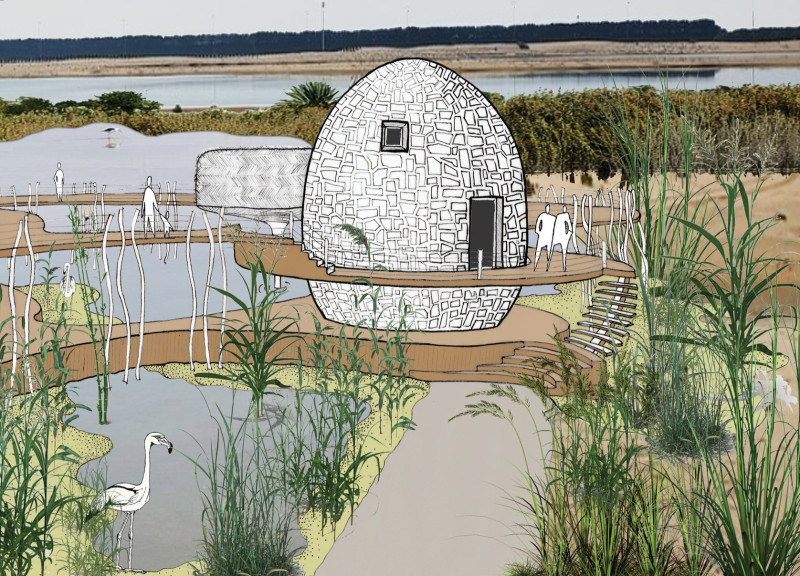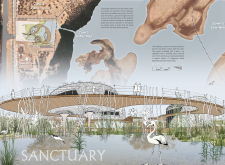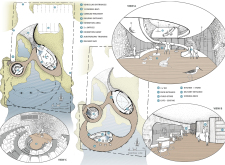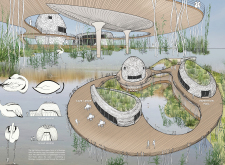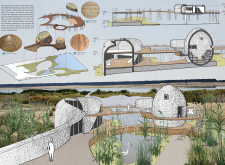5 key facts about this project
The visitor center is designed to fit naturally within its wetland surroundings. It serves as a hub for education and connection, providing exhibition space, training facilities, and a café that allows visitors to appreciate the serene environment. The design emphasizes blending with the landscape, creating an inviting experience that encourages interaction with the ecosystem.
Zone Organization
Three main zones define the layout: the Visitor Area, the Open Access Zone, and the Buffer Area. Each zone has distinct functions aimed at enhancing visitor engagement with nature. A water channel flows through the vegetation buffer, connecting the Buffer Area to the Open Access Zone. This channel creates a natural waterbody that integrates with the site's topography, enhancing the sense of place.
Building Form
The building is elevated above the ground to limit contact with water, ensuring the structure remains sound and stable. This elevation offers expansive views of the wetland, drawing visitors' attention to the natural beauty surrounding them. The center consists of an exhibition hall, a training room, and a café, all positioned behind a screen of indigenous plant life. This choice provides both privacy and a feeling of seclusion, allowing guests to enjoy their surroundings more fully.
Materiality
Traditional building materials help the center connect with its local context. The use of mud bricks in the construction of the exhibition hall and training egg reflects regional architectural practices. The café features a thatch palm structure that rests on stilts, enhancing the connection to nature and providing shaded areas for visitors. Locally sourced wood forms the deck, protecting the ecosystem beneath while offering a comfortable place for people to gather.
Design Details
The building’s shape draws inspiration from the natural world. The exhibition hall resembles a flamingo in motion. The training space, designed as an "egg," sits comfortably within the wooden deck. This emphasis on fluid forms creates an environment where the architecture relates closely to the wetland and its wildlife. Visitors are invited to experience the beauty of their surroundings while enjoying the thoughtful design of the center.


